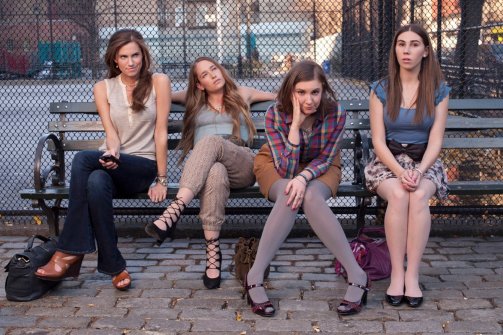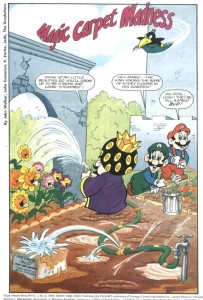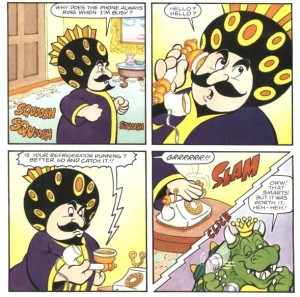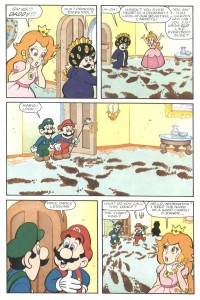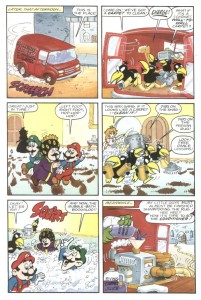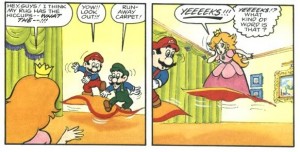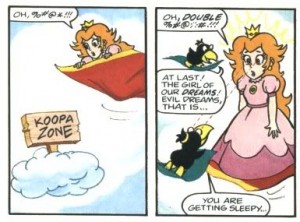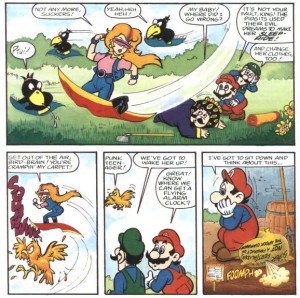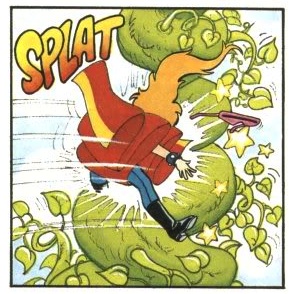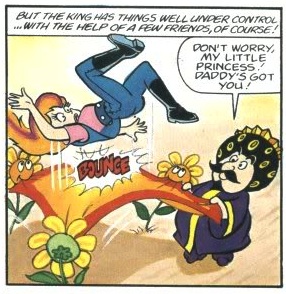Posts Tagged Comedy
The Gilded Age of Television
Posted by kjohnson1585 in Animation, Film, Television, Uncategorized, Writing on May 31, 2012
The television landscape may be doing some pretty great forms of entertainment, but the severe lack of diversity has been more problematic than critics seem willing to admit. Why?
I feel bad for Lena Dunham. The creator and showrunner for HBO’s Girls has gotten a lot of flack for the lack of racial, social and/or sexual diversity in her critically-lauded show, and it’s not really her fault. She has no responsibility to speak for an American society that now has more minority babies than Caucasian ones, or for the scores of homosexual people concerned over the future of marriage. The onus is really on the executives to greenlight and schedule shows that involve minorities, as well as promote them with the same rigor that they would their flagship shows. Girls have been receiving the backlash primarily on two fronts: 1) its very premise and characters make it impossible to deal with the real – and complex – issues plaguing the modern twenty-something, and 2) its pedigree have been exalted so much by both creators and critics that they seem unwilling or incapable of criticizing the very problem that the so-called Golden Age of Television represents. It’s a self-fulfilling prophecy that borderlines on conspiratorial; critics praising shows of a singular and narrow vision for their jobs encourage creators to create shows of a singular and narrow vision for critics to praise, and so on. This problem has extended from the AV Club to even our beloved Hulk.
Points 1) and 2) are noticeable in the promo photograph for Girls:
(Check out the parody here, which touches upon the larger point, even though I don’t quite agree with it.)
Look at it. Just look at it. Not a single person of color or minority – and this show takes place in New York, so no one will deal with the pressures of casual racism. Not one of them is gay, so they’ll never deal with the issue of coming out (or “passing”). Hell, not one of them is geeky or fat or even different in anyway, which are all real issues twenty-somethings deal with. This photo alone showcases such a strange and narrow vision of expectations, and the show, from what I’ve heard, only confirms it. Please don’t get me wrong. Denham has no responsibility to “speak” for those outside her singular vision (although this is a serious problem with auteur theory that critics fail to address – more on this later). But everything that is endemic about TV today is encapsulated right there.
We’re not in a Golden Age of Television. We’re in a Gilded Age of Television, an era that professes a greatness that masks the numerous issues that are facing the TV landscape. There is great television out there – from Mad Men and Breaking Bad, to Community and Happy Endings, to even shows like My Little Pony and Adventure Time and Regular Show. It’s stuff I truly enjoy watching, but even with this sample we can see how the “macronarratives” lean towards the heterosexual, WASP vision of the world. (Yes, even MLP – Take a look at the comments section on Youtube for any showing of the episode “Over a Barrel.” And I know that a Youtube comment section is the seventh level of hell, but I still recommend looking because it did foster a debate worth having.)
The issue, as I see it, has always been concerning auteur theory, an ideal but extremely flawed method of thinking about collaborative forms of art that ties distinctive styles and techniques to a singular person. In the broadest form, it’s a fine way of thinking about film or TV, but over the years the inherent flaws of auteur theory – the danger of discounting those “other people” who worked on the film; the limits of tying inherently “free” techniques to one (often straight, male, white, and American) person; disparaging different forms, styles, ideas, and media as having intellectual merit over others – completely fell by the wayside. Critics were careful to note these problems at the beginning of auteur theory formulation; now, it’s as if these dangers were mere trifles. There are those creators that are defined “great” and those that aren’t, and it’s odd that those “great” people are mostly, well, similar to their physical and sexual traits, defined within intellectual paradigms.
Nothing represents that most distinctly then Roger Ebert’s takedown (and subsequent non-apology) of video games as art. It’s not that I agree or disagree with him, but it’s sad, borderline embarrassing, how Ebert frames his argument, then follows all that up with some arbitrary poll when his readers can vote whether they would rather play a game or read Huckleberry Finn. As if this whole thing amuses him, the masses of people with their over-the-top and implied-uneducated-and-therefore-unworthy opinions, because of course he’d never actual, maybe, sort of, kind of, think about the issue a little. This is the modern form of criticism. It’s no longer informative, debatable, self-aware, and cautious; it’s direct, declarative, non-ironic, and bold.
And even in regards to Murray’s misappropriated essay from above, after the general disappointment and backlash against it late in the comments section, you would think there would be some sort of re-thinking of the approach the issue of “micronarrative” representation over at the AVClub and in criticism in general. But in a recent Girls review, head editor Todd VanDerWerff posts the following comment in response to the continuing Girls backslash:
“People seem completely unwilling to extend this show even an inch of intellectual/critical charity, as if every minor deviation from their own reality on the part of the show’s reality is somehow a huge failure. It’s just fucking wearying.”
Which threw that idea out the window. (Which goes doubly so for this screed on a recent Girls review, at least the second half of it.)
I know Todd and met him a few times in New York and in Los Angeles. He is a very nice person and definitely has a solid head on his shoulders. I’m pretty sure he didn’t mean to come off glib or dismissive, but hearing “it’s just fucking wearying” is irritating. As if we’re supposed to, once again, follow that auteur theory road that Dunham is a part of, and play their game of television art and be satisfied, because those who don’t or refuse to or even have legit reasons for their dislike is “wearying”. Poor Todd and critics like him, forced to think maybe other people have a point.
This, I believe, is the inherent reason to the internet’s backlash to people like Ebert or to shows like Girls or to places like Cartoon Brew. They simply do not, or in many cases will not, acknowledge the flaws in their criticisms or attempt to explore, legitimately, the criticisms of other places. They will not participate in those debates in any meaningful fashion; not to say they need to at every single occasion, but it’s that they don’t even bother. I have my issues with people like Jim Sterling at Destructoid or Penny Arcade’s Tycho Brahe (aka Jerry Holkins) or Kevin Smith, but their willingness to mix it up with the average person and willingness to explore ideas garners more points from me (and most of the internet) than most critics these days.
If more critics fall to honestly explore the problems with modern television (well, in entertainment across the board), then this Gilded Age will only grow worse, these opinions will become “rules,” and criticism will no longer be the critical thinking/exploration method like the days of old, but the biased preference of “universal” rigidity of today – which is really, really male, straight, and white.
The Hub’s Non-My Little Pony Shows – Reviews
Posted by kjohnson1585 in Animation, Television, Uncategorized, Writing on February 16, 2012
Hey! Did you know that The Hub has TV programs that aren’t My Little Pony? It’s true! The brand new network is actually trying to cater to a large variety of demographics by exploring all sorts of ideas! And I watched them! Was it worth venturing outside the MLP-sphere to engage in the network’s other shows? Read on and find out! Ratings are based on a percentage of MLP enjoyability.
Strawberry Shortcake: I suppose this was going to be the secondary, young-female-aimed show that was geared to compliment My Little Pony, but Cartoon Brew and the internet thought otherwise. Still, on it’s own, Strawberry Shortcake is flat, stuck in its limited CGI animation and first-grade sensibility to do anything even kinda interesting. This episode involved Orange (all of the characters are named after fruit) being obsessed with re-creating a resort setting at home, since the resort they planned to attend was closed. It’s somewhat amusing to think that Orange was losing her collective shit trying to match a pitch-perfect makeshift resort in their own backyard, but it wasn’t nearly as crazy as one would hope, and Strawberry gave her a typical “we’re friends, so whatever we make will be fine” speech, which calmed her down. They sung and stuff and all was well.
MLP Percentage: 8%. The main issue seems to be that this show should be two 11-minute segments instead of one full 22-minute episode. There isn’t enough “stuff” for that length of time. Rainbow Dash’s and Pinkie Pie’s voice actors are present, so you can kinda imagine those two ponies clopping around as well. But there’s no “there” there, and I suppose young girls would be coloring or playing Barbie’s while this show played in the background.
The Twisted Whiskers Show: The first animated show aired on The Hub, The Twisted Whiskers Show is a bizarre attempt to re-capture the random-compilation shorts era of the 90s, but with new, cheap CGI content. The results are mixed. It’s practically impossible to adequately create the squash-and-stretch timing and pacing of hand-drawn classics, so the voiceless, wacky shorts suffer greatly. The 30-second visual gag-teasers were forgettable, and a short involved a dog protecting his master’s garden from a genetically-altered rabbit had no hope pushing past its graphical and comical stiffness (also, it didn’t make sense most of the time). However, one short, involved a talking, sophisticated cat who gets locked out of his master’s house, was crazy enough to be enjoyable. Focusing on smaller character quirks seems to work better for the CGI, and it was interesting to see the contrast of knowledge the cat had about his home inside vs. the world outside. Not great, but strangely appealing – if creator Bill Kopp knew any better he’d focus on making odder shorts instead of trying to capture the charm of the classics.
MLP Percentage: 38% This rating is kinda off, due to how the show is segmented, but to clear it up: it’s one semi-enjoyable short with 3 other mediocre ones.
The Super Hero Squad Show: This show is goofy, and it’s hard to imagine young boys actually admitting to their friends that they watch this. The character models are disconcerting; they’re adults masquerading as kids, creating this kinda dwarf-midget effect. The plot of this particular episode was problematic, which involved Silver Surfer redirecting a lasershot fired by Dr. Doom, which inadvertently hit their airship. Everyone blamed Silver Surfer directly and quite dickishly, but NO ONE knew that the redirected shot would hit their ship prior to the occurrence. It wasn’t his fault, but everyone bullied him like it was (man, don’t we have a campaign against this behavior? It gets better, Silver!), and he ran away to find a place to fit in. Then plot happened, he got caught, then… well, stuff, but it ended with no redemption of either the Silver Surfer (which wasn’t needed) or the other heroes (which was). It has a clever comic book/geek sensibility with some fun references here and there, but it’s has a very “man, I can’t believe I’m watching this” vibe.
MLP Percentage: 39% While I would need another episode to confirm, this show seems to have trouble in defining it’s core themes and lessons for children. There’s a reason why rote-learning-experiences are reused so often in kids shows; trying to break that mold actually seems to create more problems then not. MLP has the same issues at times (“Over a Barrel”, anyone?).
Transformers Prime: This is one of the shows The Hub probably expected the boys to flock to. The CGI here is a little tighter, and the close up shots of the various Autobots are surprisingly detailed, with light reflections, dings and scratches, and variations of paint colors. I was immediately turned off by the random inclusion of three human kids, though. There’s no reason for them; in fact, they actually create MORE problems by their own inclusion in the plot, which consisted of the Autobots transporting a dangerous weapon across the country. This episode seemed to involve introducing a new enemy outside the Decepticons, called MECH, which is kinda cool and actually justified why humans* should be involved in a show involving fighting robots. The action was pretty flat though, but I think that has to do with the straight-forward plot and less with the animation.
MLP Percentage: 56% I actually realized by watching this that I have, and always had, little interest in the fighting robot scene. There’s really nothing too it other than watching metal clang and explode. Don’t get me wrong, I love shit exploding and fighting as the next guy, but watching robots do it is kinda monotonous and silly. If Transformers Prime involved more human* conflicts, there maybe a deeper show in the works.
*ADULT humans. Those kids need to die.
GI Joe: Renegades: I’m aware a lot of people hate this show by the change of its premise: The Joes should not be outlaws, but awesome AMERICAN soldiers. Still, looking past all that, this is a fairly ambitious if bogged-down piece of entertainment. I happened to catch a 2-parter which created an origin for the ninja Snake-Eyes, and developed a backstory for a new anti-Joe squad. I kinda enjoyed the increase in overall stakes, and the animation worked, in a sub-par-Avatar-but-still-passable kind of way. The story kinda huffed and puffed its way through, and it was hilarious how everyone kept asking Snake-Eyes questions despite the fact he COULDN’T TALK BECAUSE HIS THROAT WAS CUT. It mistakes a gross misunderstanding as a complex conflict, and while it’ll create some interesting villains in the long run, it reeks of “we’ll be laughing about this later!” goofiness.
MLP Percentage: 60% All the characters were cookie cutter but this was the first cartoon I’ve seen where Duke, the leader, acted like a real leader. He didn’t just spout commands and save the day. He reacted to the constant and changing situations of the mission and his crew. The last time I’ve seen this was in Whedon’s Firefly with Malcolm Reynolds. It’s in good company.
Dan Vs: This show seems completely anathema to The Hub’s overall direction. This show is also what Allen Gregory should have been like. Dan, the main character, is a paranoid psychopath, who, upon getting annoyed with something, immediately wages an unholy war against it. It’s a funny premise, although it’s tricky to pull a 22-minute length comic bit against a concept, especially when you already beginning at level 10 in terms of reaction. (Ex: In “Dan Vs. Dancing,” it begins with him trying to blow up a dance studio. How do you get bigger than that? By kidnapping him and tossing him in a ghost town filled with dance-talented zombies!) But Dan is relentless in a sub-Master Shake kinda way, and the secondary characters are soft/crazy enough to “stick” with Dan despite his insanity – which is always hard to maintain in the realm of “why would anyone hang out with this guy.” There also seems to be some attempt to continuity, as the last episode simply ended with his cat missing. I would think they’ll be coming back to explain that.
MLP Percentage: 76% It’s a pretty crazy show, goofy enough to work fairly well, although it seems scatterbrained at times.
Pound Puppies: It takes a while – and I mean a WHILE – to stomach the awful Flash animation style, but if you can get past that, and the pretty basic premise, there’s actually a really charming show here. What makes this reboot work so well is that it doesn’t skirt the “orphan” angle here. The various canines that emerge from the Pound Puppies HQ are simply eager to be loved and accepted by their new owners, and that love isn’t always reciprocated. The dogs are innocent, and mostly are made worse by their owners, which is true in real life. One episode included a dog who believed his value as a pet was only in winning dog shows; another consisted of a dog who cheered on a newcomer pet despite the real fact he’d be replaced by her. It’s surprisingly deep for something that shouldn’t be, and on occasion has even more depth that MLP at times. (Yeah, I said it.)
MLP Percentage: 94% If you ever lost a pet due to a tough decision or because of higher authority decreeing it, it’ll hit close to home. It’s also somewhat amusing (in a cute, classic way), and I actually will add this to my MLP weekly watch. Speaking of which…
SURPRISE REVIEW: MLP, Season 2: I’m actually really surprised people are enjoying this season in any way, despite the fact that it’s slowly becoming the pandering, shallow show that season 1 did such a good job to avoid. “Secret of My Excess” and “The Return of Harmony” were charming and inspired, but all the characters, who were more than their stereotypes, are becoming their stereotypes, to the point that they’re putting people’s lives in danger; Twilight’s insanity in “Lesson Zero,” Pinkie’s lack of responsibility in “Baby Cakes,” Applejack’s pride in “The Last Roundup,” and Rainbow Dash’s eccentricities in “May the Best Pet Win” AND “Mysterious Mare Do Well.” Rarity didn’t threaten any lives, but she’s definitely went from caring-with-high-tastes to arrogant drama queen. And Fluttershy… well, not for nothing, but she was fairly one-note in the first season. I kinda figured there wouldn’t be too many episodes starring her in this season.
MLP Percentage (based against season 1): 42%. Sorry, I’m not feeling this season at all save for one or two episodes. Conflicts should come from ponies coming into conflict with each other or legitimate forces, not childish personal issues based on life lessons – that’s what the annoying Cutie Mark Crusaders are for.
Super Mario Comics – Magic Carpet Madness
Posted by kjohnson1585 in Animation, Comics, Super Mario Comics, Video Games, Writing on October 6, 2011
This next Super Mario Adventure comic, similar to “Just Desserts”, is riff with potential but falls short of narrative closure. It’s also a little goofier, more cartoony than the typical batch of comics in the anthology. Mario and Luigi are kinda tossed aside here as the comic relief, focusing on King Toadstool and Princess Toadstool. The next comic will play around with the brothers and their relationship; but this will give me a good opportunity to discuss the dynamics of the daughter/father relationship here.
King Toadstool isn’t that smart. He’s a loveable teddy bear, in which both words – “teddy” and “bear” – have tremendous weight. He doesn’t really think in terms of what’s best for Mushroom Kingdom, seemingly more content to sleep, eat, work in his garden, and otherwise sit around. (On occasion he will exercise a tremendous amount of rage, but it’s pretty rare, and usually comes from somewhere incompetent.) He loves his daughter, that much is for sure, but otherwise seem clueless when it comes to relationships, both private and public. It’s pretty clear the Mushroom Kingdom would be in shambles if it wasn’t for Toad, newcomer Wooster, and, most importantly, Princess Toadstool.
Every comic representation of Princess Toadstool has always been amazing; even the worse stories have managed to make the pink-dressed princess endearing in some way. She is also the most consistent. She balances herself between a classy, formal, slightly naggy feminine figure, and a badass, sarcastic, aggressive, fighter. The balance is less practical and more hilarious, but it also gets the job done. It’s pretty cool to see in this comic how she bounces back and forth between girly and grizzled.
We begin with a pretty solidly constructed establishing panel:
Note the Betty Boop-esque anthropomorphism with the flowers. Yeah, we’re in the cartoon realm here. It kinda reminds me of the judgmental bushes in “Piranha-Round Sue.” Seems the artists tend to use the anthropomorphic construct on background objects to reflect the overall tone of the panel in question. I can’t say it’s too effective – I mean, the dialogue and the coloring already reflects that – but it also a good visual cue to showcase that what you are reading is not, in any way, supposed to be seen as real or realistic. We’re off to a whimsical start.
The king walks inside the palace to answer a phone call – but is annoyed when it’s revealed to be a prank. But, by Bowser? More foreshadowing. I like how quick the tension starts – this is only the second page. What’s he up to?
While I love Princess Toadstool’s reaction to the muddy mess her father left (even the most machismo guys would flip a shit at that), seeing the Mario Bros. mistake the footprints as free dancing lessons is lame, even by 80s and 90s standards. Even if they’re being funny about it… I don’t know. It reeks of randomness, or more appropriately, a joke for joke sake, without putting too much thought behind giving the Mario Bros. any credibility. They’re kind of worthless throughout this comic. Also, Princess Toadstool’s direct comment to her father about “just growing old”? Surprisingly dark and somewhat cold. But, seriously, this is how she is. It’s crude, but so princess-y, and so amazing.
Princess, being practical, calls for a carpet cleaning service. Who arrives? Why, multiple pidgits (the black bird thing from the first page)! Also, they arrive in a van, which means the Mushroom Kingdom has cars. Nice to know they aren’t a completely nature-oriented species. (They also have airplanes and blimps, which appear later.)
So they clean the carpet, while Mario, Luigi, and the King continue to dance in the suds. It’s eye-rollingly annoying, and the jokes are the weakest elements here. There’s being silly, and being stupid, and when most of the cast just acts dumb, it drags everything down – which includes an insanely moronic future comic called “Duh, Stupid Bomb” later in the series. But I digress. As the carpet is conditioned, familiar Bowser-hands add in the secret ingredient Flying Carpet Juice, which looks like grape juice. As the namesake, the carpets begin to fly. In a pretty egregious error, the entire carpet doesn’t fly, but the various small rugs the characters HAPPEN TO BE STANDING ON fly. Also, why they just don’t jump off is unclear, especially the brothers, who are master jumpers. Just… guh, frustrating.
But we get some great Princess Toadstool moments. In the midst of carpet chaos, she has a profound thought:
She then starts bitching about stuff. Say what you will, but if this was happening in my house, I’d suddenly be mad about everything, too.
Which leads to my favorite moment – Princess Toadstool swearing. Twice:
Sure, it’s edited. But it’s there. She clearly drops to F-bombs as she reaches the (sigh) Koopa Zone (is this King Koopa’s airspace? How’d he negotiate that, right over the palace?!). Watching her Majesty just work through these panels is quite a delight. She’s commanding, snappy, random, and concerned all in the span of a few pages. And, with a bit of hypnosis…
She’s badass.
On closer inspection, this is a REALLY crazy moment. Notice the King immediately assuming his bad parenting. Take a gander at specifically what the Princess is wearing. Notice how she suddenly has complete control of the carpet. She even fucks with a random bird, who calls her a “punk teenager” (in case you didn’t get it). The funny part is that I could really see her being like this with not that much of a nudge. She’s incredibly snarky throughout the comic, who has more of a hipster personality more than anything, personified through some feminine wiles. It’ll be much clearer later on.
Nothing comes of any of this though. Mario sits on some plant food, which spills onto some beans, which grows into a giant beanstalk. They climb it in what seems to be like some attempt to grab her, but —
— she slams into the beanstalk instead because she was talking shit to a blimp. Kinda cute, but she’s falling, and about to DIE. Luckily, King Toadstool redeems his parenting skills:
And all is well. Mario and Luigi were useless all throughout, and Koopa got his, although in a whatever-kind of way. Still, King Toadstool’s lines in that panel are as sincere as they come. You cannot deny that father-daughter love, no matter how old Princess Toadstool wants him to get.
“Magic Carpet Madness” is pretty weak all over, but the nice moments with the Toadstool family dynamic have some solid underpinnings that will be worked on and refined in future issues. We’ll see more Princess Toadstool awesomeness in the next couple of issues as well, but next up is in-depth look at the Mario/Luigi relationship, one that will be a treat to explore and write about. That idea of Luigi being second to Mario’s heroics and character? Think again.

